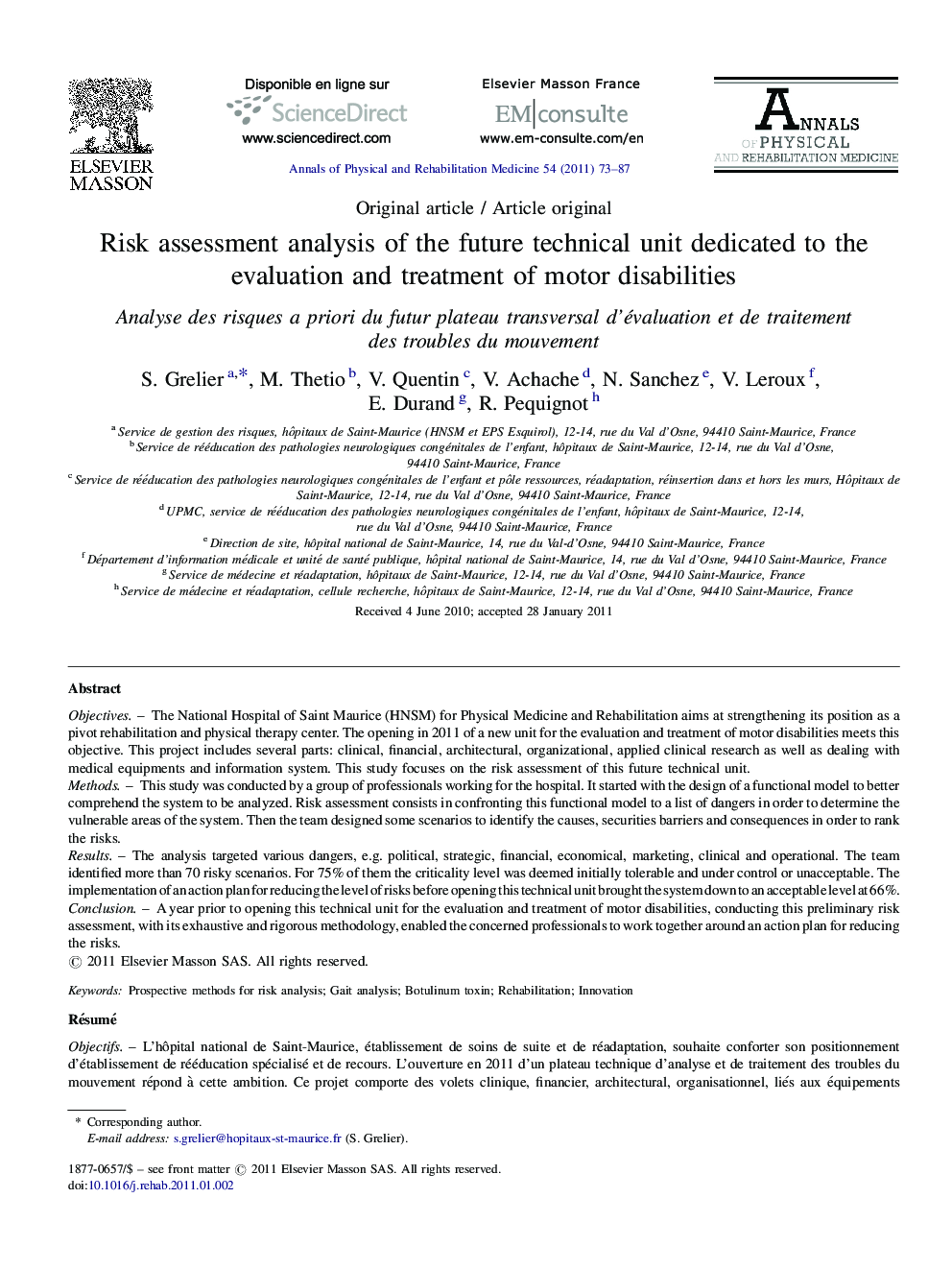| کد مقاله | کد نشریه | سال انتشار | مقاله انگلیسی | نسخه تمام متن |
|---|---|---|---|---|
| 4041249 | 1603339 | 2011 | 15 صفحه PDF | دانلود رایگان |

ObjectivesThe National Hospital of Saint Maurice (HNSM) for Physical Medicine and Rehabilitation aims at strengthening its position as a pivot rehabilitation and physical therapy center. The opening in 2011 of a new unit for the evaluation and treatment of motor disabilities meets this objective. This project includes several parts: clinical, financial, architectural, organizational, applied clinical research as well as dealing with medical equipments and information system. This study focuses on the risk assessment of this future technical unit.MethodsThis study was conducted by a group of professionals working for the hospital. It started with the design of a functional model to better comprehend the system to be analyzed. Risk assessment consists in confronting this functional model to a list of dangers in order to determine the vulnerable areas of the system. Then the team designed some scenarios to identify the causes, securities barriers and consequences in order to rank the risks.ResultsThe analysis targeted various dangers, e.g. political, strategic, financial, economical, marketing, clinical and operational. The team identified more than 70 risky scenarios. For 75% of them the criticality level was deemed initially tolerable and under control or unacceptable. The implementation of an action plan for reducing the level of risks before opening this technical unit brought the system down to an acceptable level at 66%.ConclusionA year prior to opening this technical unit for the evaluation and treatment of motor disabilities, conducting this preliminary risk assessment, with its exhaustive and rigorous methodology, enabled the concerned professionals to work together around an action plan for reducing the risks.
RésuméObjectifsL’hôpital national de Saint-Maurice, établissement de soins de suite et de réadaptation, souhaite conforter son positionnement d’établissement de rééducation spécialisé et de recours. L’ouverture en 2011 d’un plateau technique d’analyse et de traitement des troubles du mouvement répond à cette ambition. Ce projet comporte des volets clinique, financier, architectural, organisationnel, liés aux équipements médicaux, au système d’information et à la recherche clinique appliquée. L’étude consiste en l’analyse des risques a priori de ce futur plateau technique.MéthodesL’étude est réalisée par un groupe de professionnels de l’établissement. Elle débute par la réalisation d’une modélisation fonctionnelle afin de décrire le système analysé. L’analyse des risques repose sur la confrontation de ce système avec une liste de dangers, permettant d’établir les vulnérabilités du système. Elle se poursuit par l’élaboration de scénarios afin d’identifier causes, barrières de sécurité, conséquences et de hiérarchiser les risques.RésultatsL’analyse ciblée sur les dangers politique, stratégique, financier, économique, commercial, clinique et opérationnel permet d’identifier plus de 70 scénarios dont 75 % sont estimés de criticités initiales tolérables sous contrôle ou inacceptables. La mise en œuvre d’un plan d’actions de réduction de risque avant l’ouverture du plateau technique fait passer le système vers un niveau acceptable en l’état à 66 %.ConclusionL’analyse préliminaire des risques, méthode exhaustive et rigoureuse, permet, un an avant l’ouverture du plateau technique, de faire un point d’avancement du projet et de fédérer les professionnels concernés autour d’un plan d’actions de réduction des risques.
Journal: Annals of Physical and Rehabilitation Medicine - Volume 54, Issue 2, March 2011, Pages 73–87